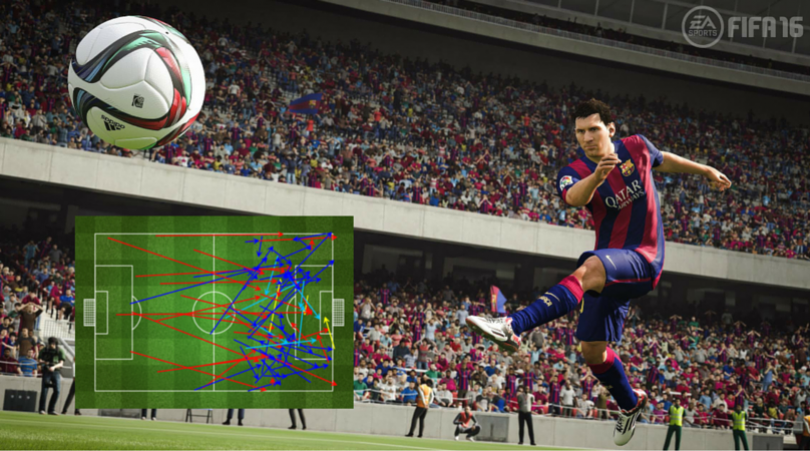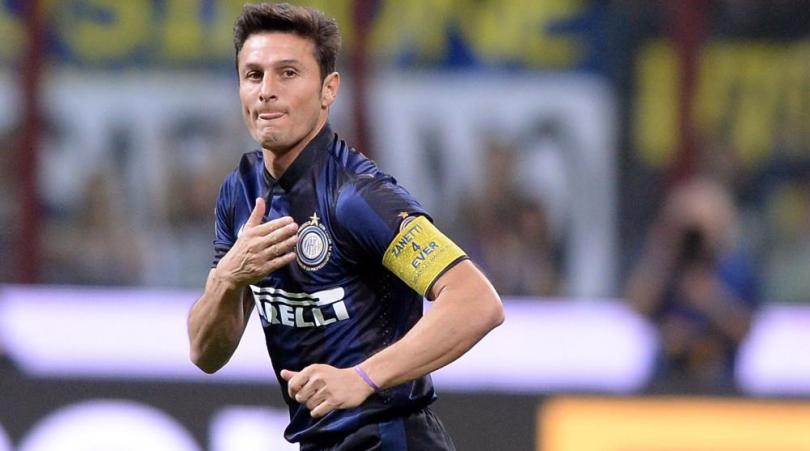Video guide: FIFA 16's online modes reviewed
Professional games guru James Price has been putting the latest game through the grinder, to really test out how the online modes work. Here's his no-pulled-punches review...
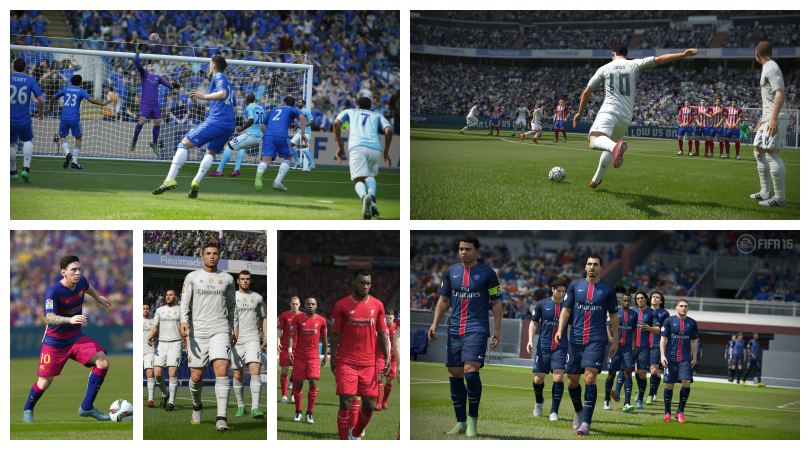
After hours upon hours of epic head-to-heads with friends, but entirely variable experiences against random, single-serving adversaries in Ultimate Team, Seasons (both co-op and solo) and Pro Clubs, I’m starting to think that the real problem with FIFA 16, the one bug that EA will not and cannot fix, is the other 99.9% of people who play it.
Although EA Sports score a fair number of own goals with bugs, poorly-implemented features and assorted oversights, FIFA 16’s most frustrating issues only surface once you leave the happy bubble of friendly competition against familiar opponents.
Gamers gonna game
Every time a new video game with an online component is released, irrespective of genre, there’s a brief period where everyone enjoys a relatively even playing field. Within anything from hours to a few days, though, certain staple playstyles and techniques emerge, and are analysed, shared and emulated.
Players will also find exploits of all shapes and forms, from outright cheating to techniques that exist in a moral grey area – facilitated by the game engine, but not entirely in keeping with the spirit of fair play.
With successful online titles that have wide, active and well-informed player communities, wise developers issue updates that remove exploits and fine-tune the balance of play to make their game more interesting and competitive – and, of course, to keep it relevant to an audience who might otherwise jump ship.
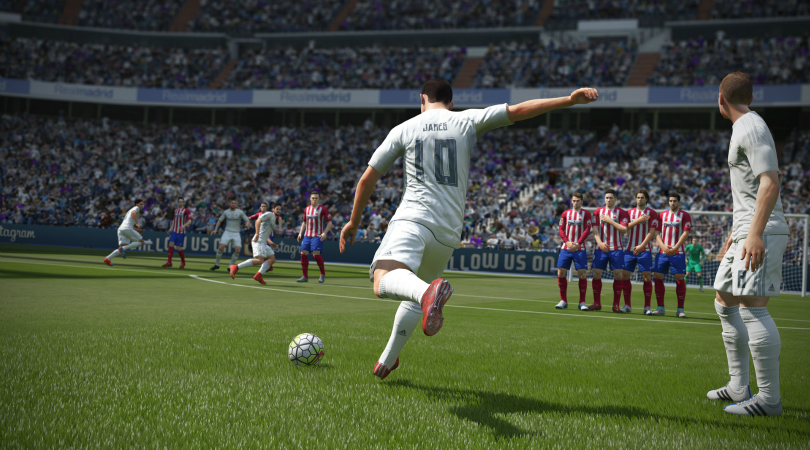
Strangely, FIFA is only accorded with that degree of TLC within its first month or two on sale, despite the fact that it’s a year-round going concern for a large and vocal fanbase. After an initial wave of bug fixes and (usually minor) refinements, EA Sports are generally happy to leave FIFA’s match engine untouched.
Get FourFourTwo Newsletter
The best features, fun and footballing quizzes, straight to your inbox every week.
Emergency bug fixes notwithstanding, the FIFA you play in November or December is functionally identical to the FIFA you play the following summer. No matter how the developers might feel about the match engine and how players use it, and irrespective of how many times players vent their frustrations with everything from well-reasoned arguments to spittle-flecked invective on forums, EA Sports hold all adjustments, refinements and innovations back for the following instalment. There are evolving elements such as player updates and Ultimate Team promotions, sure, but the core match experience is set in stone.
A longstanding idiosyncrasy of the FIFA engine that returns for FIFA 16: players assigned to the CDM role, even those who specialise in that position with specific instructions to stay back, have a tendency to go wandering. In this instance, Ramires is further forward than Costa when a modicum of good fortune leads to a goal...
The real pity is, an informed player can pretty much guess how FIFA is going to play all year by the middle of October. After an initial week or so of everybody finding their feet (and, more often than not, failing with select techniques that worked well in the previous release), certain styles or tricks gradually become prevalent. The real tragedy for online play in FIFA is that EA tend to walk away at exactly the time when they should, in an ideal world, have a team poised to take a hands-on curatorial role in adjusting the game balance in accordance with trends and common tribulations.
In terms of pure football, last year’s FIFA 15 soon became arguably EA’s least convincing simulation
In terms of pure football, last year’s FIFA 15 soon became arguably EA’s least convincing simulation of the real-life sport in the best part of a decade, and within mere weeks of launch, because people soon cottoned on that a direct and reductive style of play was the most efficient strategy. With defenders tentative and awkward when faced with high-power through-balls, playing the percentages would enable a bad player to win a respectable proportion of their matches.
An expert player, though, could regularly concede the majority of possession, but still win by a clear margin against all but the most capable opponents. Some players took it to extremes, where their ability to set up scoring opportunities with the absolute bare minimum of football made Charles Reep’s much-maligned Three Pass Optimum rule sound like a description of peak Guardiola.
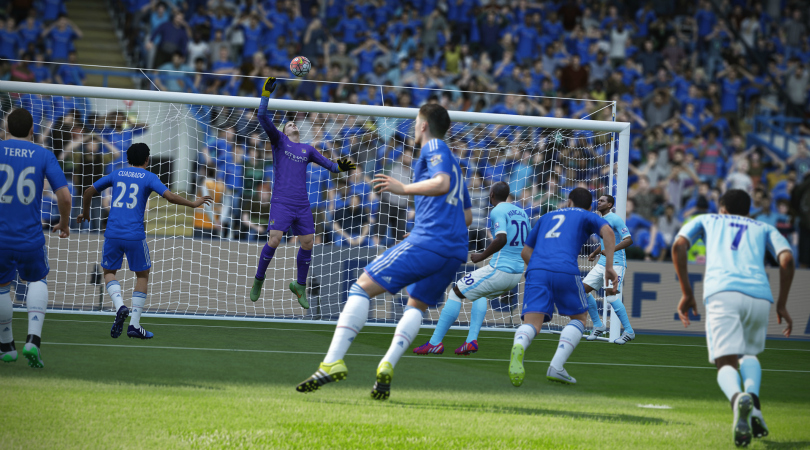
Given the opportunity to replace complicated, layered build-up play with simple, timed button presses that enabled them to bypass the midfield, many players chose the easy option. And why not? If the developers were happy to step back and let everyone play that way, who can say that there was anything wrong with it?
Hell is other people
FIFA 16 is a more sophisticated and carefully-orchestrated interpretation of football than its forebear, so it has been interesting to watch players attempt to “game” it over the past month. While direct play is still an option, it’s generally as inconsistent and as easy to counter for a well-drilled defence as it is in real life – a sign of definite progress. For passing idealists, watching one-note opponents fail miserably with guileless FIFA 15-style through balls during the first week or so must have felt like a brave new world where their stubborn refusal to eschew carpet football would finally pay off.
The reality, though, is that players have been finding other ways to simplify the process of playing strangers online. While a number of the principal complaints levelled at FIFA 15 have been addressed in one way or another (particularly pace abuse, long balls and consistently idiotic keepers), a selection of new issues have emerged to replace them. Everyone has their own selection of pet hates, of course, but the following four core problems have been pretty much universally acknowledged by the FIFA community:
1. Persistent running with the ball
While skill moves aren’t quite as powerful as they were last year, there’s a knack to travelling with the ball with players who possess appropriate attributes (particularly dribbling and acceleration) that enables you to slalom through your opponent’s half in a fashion that owes more to skiing than top-flight football. As passing is hard, and requires dedication and patience, a proportion of the player base have apparently decided to disregard it entirely once they reach the halfway line or final third. You can counter such runs with calm defending, of course, and not all exponents of this dark art are particularly adept at it, but these zig-zag runs have an alarming tendency to make your players feel flat-footed and sluggish by comparison – especially if the connection with your opposite number is less than perfect.
It doesn’t matter how good you are at defending: switch off for a second, and these ridiculous runs can cause real problems. And that’s why people try this type of nonsense so often – it sometimes works.
2. Arbitrary free-kicks and penalties
...and the ease of converting them. Opinion varies on whether the abundance of soft free-kicks and penalties that have little relation to the defending player’s intention or direct input are a conscious design decision, or a shortcoming of the Impact Engine and officiating AI. The problem is that some players – altogether too many – have cottoned on to this idiosyncrasy of the simulation, and now actively play for penalties, weaving through the penalty area with no real intention of making a shot unless they can’t miss.
The same is true outside the box, where any free-kick within 35 yards is a prime goal-scoring opportunity for anyone reasonably well-versed in the art of set-pieces – especially as keepers habitually leave too much space on one side, and manually positioning a defender on the line can be a fiddly business for some. It’s maddening when you watch aggressive opponents go unpunished for brutal, late tackles while the simple act of running alongside a striker while you wait for a moment to stick a toe in, with no other button press or direct interference, apparently warrants a penalty.
Two typical soft penalty scenarios. In the first, played in UT, the attacking player jumps into the back of the defender. In the second, from a Pro Clubs match, a clumsy lunge by a defending player completely misses the striker by a margin that even spectators in Row Z can see… but the referee still blows for the spot-kick.
If your opponent doesn’t have the time or wisdom to run a man back to stand on the line, free-kicks are really too easy to score this year. The system definitely needs an overhaul, and probably some form of in-game defensive button function advice to assist less knowledgeable players.
3. No drawbacks to constant high-tempo pressing
With a few elementary tactical tweaks, you can pretty much turn your midfield into a swarm of homing missiles whenever your opponent is in possession. It’s utterly bizarre that one of the most difficult strategies to train and collectively perform in world football can be implemented with a few well-informed menu selections. Your ability to counter it varies in accordance with the sometimes unintuitive paper-scissors-stone relationship between the two formations in use. When Lady Luck smiles and opens up little pockets of space, you can sometimes pass them off the pitch with a song in your heart; in another match, it might seem as if every conceivable passing lane is a rail line that opposing players ride with unerring accuracy.
This isn’t a new issue, but the more technical first-touch mechanics mean that this mostly automated style of rapid, relentless closing down turns too many matches into joyless wars of attrition – especially if you don’t have the best of connections with your rival. Inexplicably, there are STILL no obvious stamina penalties for choosing this much-criticised and oversubscribed approach. This needs to change.
4. Referees are still too lenient
While late, scything tackles from behind usually lead to a red card, the officials in FIFA 16 are still too inclined to turn a blind eye to what borders on outright thuggery. When the penny drops that the current referee falls into the ‘Lenient’ category, cynical online players are inclined to embark on a concerted, incessant barrage of slide tackles from the front, switching to shirt-tugs and wrestling whenever they’re behind an opponent. Married with high-intensity pressing, this can make it hard to string passes together.
In real life, you’d expect a gradual accumulation of cards to temper a team’s desire to stick with such bullyboy tactics, or a timely second yellow to cause everything to fall apart, but that rarely seems to be the case here. Officials appear to completely disregard persistent fouling (even though there’s a dedicated cutscene animation for this very purpose, one that you’re just as likely to see for a first challenge), which means that you sometimes have to endure a full 90 minutes of physical intimidation that even the Crazy Gang in their pugnacious pomp might have deemed cruel and disproportionate.
With practice, you can spend an entire match hurling studs-up challenges at opponents where, as long as you make some kind of contact with the ball, you can generally get away with anything short of manslaughter.
Passing the blame
Naturally, there are other issues with the match engine that players attempt to profit from, but those four are certainly the most common and lamented. The thing is, it’s fair to speculate that most people who happily and habitually punch through the margins of fair play against strangers are far less inclined to behave that way against real-life friends in head-to-head games. If you play a cynical, frustrating style of FIFA against someone you know, you can expect to hear an unfettered opinion on your approach; push your luck too far, and they might tell you exactly where to stick your sweaty, win-at-all-costs mentality.
Against strangers, it seems that the desire to win games by any means necessary is the norm. You encounter exceptions – the person who responds to an entirely unnecessary penalty by punting the ball over the bar, or who stops and knocks the ball out of play during a break because he notices that one of your centre-backs is still having an emergency lie-down after a prior collision – but this is rare enough to be exceptional. There’s nothing that the relative few who steadfastly believe in sportsmanship for its own sake can do about that, short of hoping for a momentous cultural upheaval or wondering what thousands of years of evolution that we won’t live to see might bring, so let’s move on.
I can understand why so many people are so cynical in their approach to FIFA 16, even though I rarely enjoy matches against them. It’s not easy to play well, or honestly, and it’s much, much harder when you’re angry – a mood shift that FIFA can achieve in the space of a heartbeat. One thing I notice is that many of the opponents that favour a reductive approach (particularly too much dribbling, constant fouls, trawling for soft decisions from officials, et al) are lousy with passing, or use the wrong tactical setup for their playstyle. They usually don’t know to turn and face a direction while passing, they sprint too much, and they don’t know when to take a touch and slow it down, or send it a ball backwards and start again. The better I play, the more they seem to opt to just dribble and be damned.
The golden rule of playing FIFA is to stay calm. The moment you start to get angry, finish your match and walk away. We’re not saying you’re wrong to get frustrated. When you can fall behind to goals as lousy as these two (note how the keeper stands aside in the first), it’s a perfectly understandable response.
Passing in FIFA 16 is much more nuanced than it has ever been. Because you need to pay attention to variables that influence pass accuracy and pace (particularly first touch, direction faced, player momentum and opponent proximity), measured build-up play is a joy when things are going well. It’s also really hard to maintain. One moment of too much power, a hint of “stickiness” (a momentary hitch in frame rate common to online matches in this year’s game), or a lapse in concentration, and everything falls apart.
Sometimes FIFA 16 translates your short feathered pass into a pitch-length punt, or vice versa, for its own inscrutable reasons. In these instances, you can’t help but look down at your joypad to check you’re not holding it upside-down while venting with your chosen obscene biological instruction, epithet or incoherent emotional bark. There are also certain ‘danger areas’ on the pitch where passes can be truly bizarre. In your own box, under pressure, watch out for full-strength passes out of defence becoming a tap to an unprepared team-mate or, worse, an opponent. Similarly, when positioned just outside your opponent’s area, it’s amazing how many times a simple through-ball that would work in a perfectly intuitive way 20 yards back down the pitch suddenly becomes a wild toe-poke to the keeper or nearest defender.
That passing is demanding is, on balance, a good thing – nobody wants a return to the oversimplified ‘ping-pong passing’ of FIFAs past. But the relative difficulty of perfecting a short game, in addition to the occasionally capricious nature of the engine, means that some players are just being practical by favouring a reductionist approach. You can sneer and judge, but EA are the sole arbiters of how FIFA can or should be played. If they implicitly decree, by virtue of the fact that it occasionally works, that slaloming left and right towards a penalty area direct from a kick-off is valid tactic, then so be it.
Similarly, if high-tempo pressing is deemed something you can activate and enjoy with a couple of menu selections, that’s just the way things are going to be until they change their mind. It’s their ball, after all.
If your opponent plays a relentless pressure game with a high back line, switch to the counter attack strategy and look to release fast wingers and strikers with low, drilled through-balls from deep positions. If you notice their goalkeeper run off the line, a word to the wise: chip shots are really effective this year.
Blame the governing body
In a very real sense, every new FIFA is built on top of the old one, and EA’s development strategy has long been one of practical, affordable evolution. It’s hard to shake the suspicion that most major components in this complicated simulation are, in some shape or form, more than a little bit broken.
In a manner of speaking, cracks in the bricks and mortar of the FIFA house are rarely filled in – they’re either painted or papered over, or the furniture slightly rearranged to conceal them. This isn’t necessarily a criticism, because I’m not aware of any other feasible (and commercially realistic) way that the team at EA Sports could other continue to hit stringent yearly deadlines.
Fixing things in FIFA must be a nightmare, as every small adjustment in one area might conceivably have a negative impact on something else. I’m sure they’d love to completely rewrite problematic portions of the match engine code, but just don’t have the time, resources or expertise – so they just mend and make do.
The match engine is relatively free of bugs this year (most issues encountered are related to game balance and tuning), but the Impact Engine still throws up a few gems. You’ll know this one when you see it.
A classic example of this is the way that through-balls have been vastly downgraded in their efficiency this year. In FIFA 15, this style of delivery could be employed to destroy defences in countless different ways.
With FIFA 16, these passes into space add a new dimension to build-up play in the middle third, but prove utterly hit-and-miss in and around the penalty area. What’s more, strikers in most formations (especially lone frontmen) are often strangely reticent to make runs through defensive lines, even when you’re holding the ball and frantically issuing manual instructions for them to do so.
There’s a weird animation where they alternate between running and jogging when they approach the defensive line in these situations, as if they don’t quite know where to go or what to do. I think this is because they really don’t: EA have made a specific decision to restrict this style of chance creation.
Here’s another thing: where are low, drilled strikes in FIFA 16? They happen sometimes (usually with contextual animations in very specific circumstances), but strikers mostly attempt to rocket the ball into the roof of the net with very little button-based encouragement.
The explanation is likely to be that EA’s new goalkeeper AI and animation system probably can’t cope with that style of shot, and so they’ve been excised from the match engine until programmers can work out how to accommodate them. I may be wrong, but it’s a curious move for EA to omit them if I’m not.
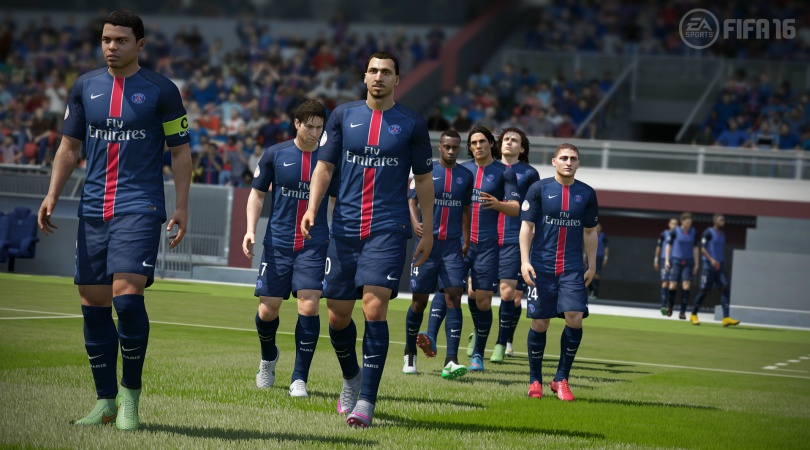
Some players might get annoyed about crude ‘fixes’ such as these, but it could equally be construed as evidence of growing professionalism and pragmatism within the FIFA team. I can remember a FIFA game years ago (an international tournament release, I think) where rolling the ball to either side of the keeper led to a goal almost every time. You were a fool if you tried any other type of shot inside the area. Last year, we had those endless through-balls to onrushing strikers to slot home with near-post finishes.
There are many others that I could mention, but you get the point. I’d much rather have a broken feature removed entirely, or an overpowered one deliberately nerfed, than have it become an immersion-breaking standard that everybody hates, but naturally exploits without fail. And for many entirely non-trivial reasons, this is why FIFA 16 is as good as it is. Strikers are a little bit broken, so you have to be a bit more inventive to fashion chances. Passing is a little broken, but this leads to the regular transitions that make matches much more exciting and varied. And shooting is broken, because the improved keepers and camera-friendly save animations come at a cost. Studied individually, you might regard all these things as shortcomings. Put them all together, though, and they’re entirely necessary for FIFA 16 to work as well as it does.
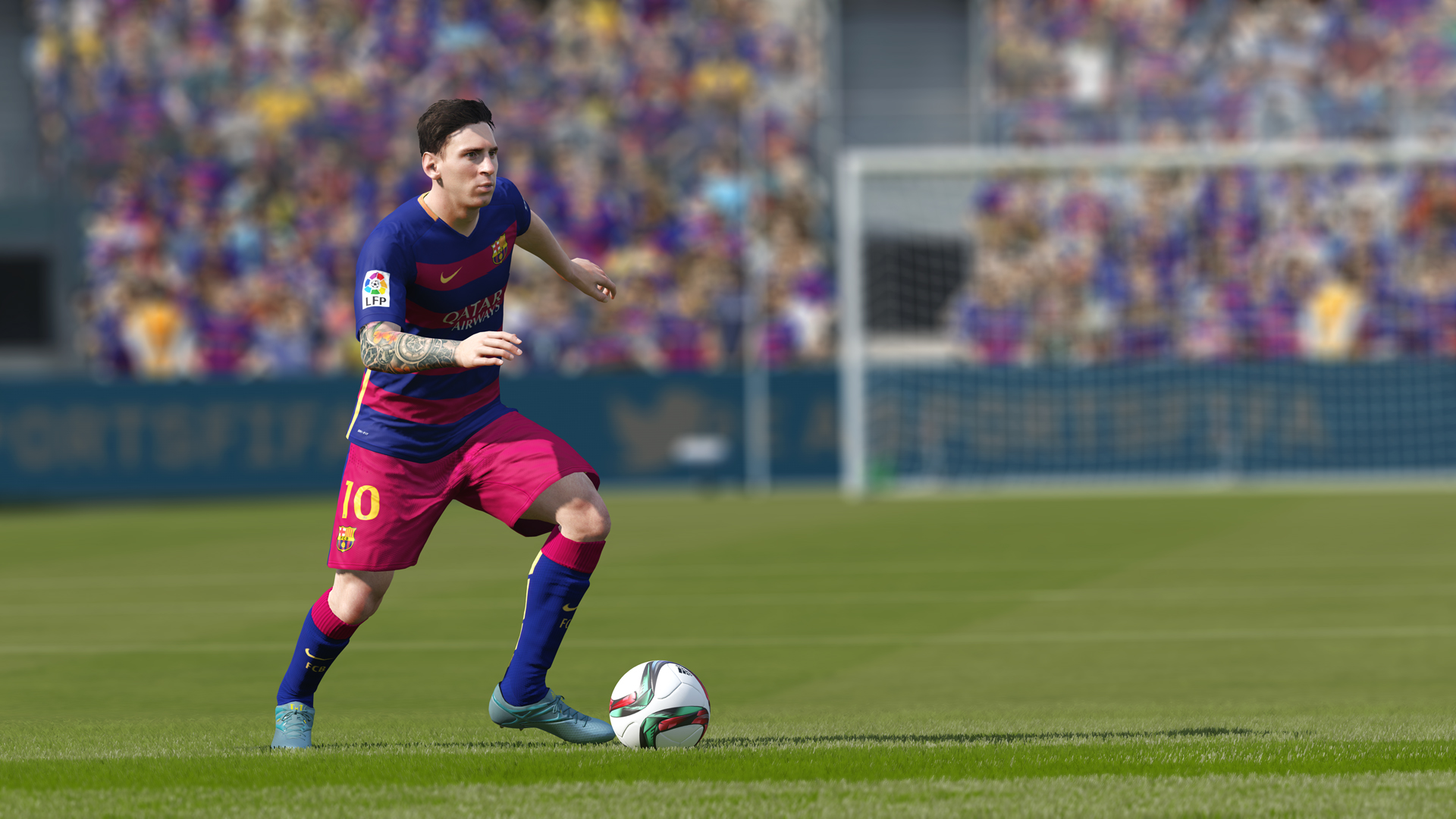
If EA can release a major patch in the near future that addresses the most common complaints and bugs, while preserving the current laudable flow and variety of matches when two players approach the game in the right spirit, we might one day look back on FIFA 16 as a pivotal release.
When I’m not playing the type of strangers who sully 15 minutes of my life with their unwillingness to play anything approximate to football, I’ve got more respect for the overall balance and ‘feel’ of this game than any other FIFA in recent memory.
If EA can release a major patch in the near future that addresses the most common complaints and bugs... we might one day look back on FIFA 16 as a pivotal release
Against a friend or an opponent with a similar footballing philosophy, FIFA 16 might just be the most varied and interesting simulation in the history of the series. In single-console games played in front of the same screen, where there’s a cast-iron accord to not exploit select idiosyncrasies and shortcomings of the match engine (particularly soft penalties, quick free-kicks and tedious overuse of dribbling or the High Pressure tactic), this is arguably FIFA at its finest. In online head-to-head matches against a friend with a solid internet connection, the slightly reduced frame rate and overall fluidity rarely detract from the experience once you’re fully absorbed in a match.
All that said, though – if you get an Ultimate Team title-decider against a cynical little b*****d who kicks your team off the park with impunity, and somehow steals the points with a soft (played-for) penalty after making no more than twenty passes in the entire 90 minutes, it’s easily the worst game ever.
FourFourTwo verdict
It’s by no means perfect, but FIFA 16 multiplayer represents a healthy stride in that approximate direction. Play against a peer who enjoys the game in the right spirit, and it’s almost a five-star triumph – win or lose. Head online to challenge the faceless masses, however, and your mileage will vary.
4/5
Stray thoughts and observations
- Now that teams are more inclined to defend in depth, the code that governs player selection is REALLY skittish this year. How many goals are conceded every day because players simply can’t get the right man or woman under control? Fingers crossed, EA will attempt to address the issue in a future patch. On that subject, I have a FIFA joke:
CRISTIANO: Have you heard that EA are working on a new FIFA 16 update that will remove the worst exploits, rebalance the match engine, fix bugs and add a few cool new features?
LIONEL: Oh wow! That’s amazing news! When are they releasing it?
CRISTIANO: September 2016.
- Crossing is awful this year. Cutting back and curling the ball in with your winger’s weaker foot leads to better opportunities than the majority of deliveries made while facing the touchline. This, like certain through-balls and the paucity of low shots, feels like the result of a balancing fix that has gone too far (weren’t crosses a little too effective in the demo?), essentially breaking this aspect of the simulation.
- Is it just me, or are there more lag-blighted matches than ever? Whatever has been done to the net code, there seem to be far more ‘sticky’, stutter-prone online fixtures than I can recall in recent years.
- I don’t want to get into the whole interminable ‘momentum’/’scripting’ debate (the belief held by certain FIFA players, denied by EA Sports, that behind-the-scenes code selectively conspires against or assists participants in online games for reasons too involved to relate here), but I’ve definitely noticed one new quirk that feels a mite suspect: occasional odd high-scoring matches. I’m adept at keeping a clean sheet, and try not to chase the game too aggressively once I’m ahead – I’ll hold the ball and be a bit more patient in probing for openings. But every now and again, there will be a match where, for some reason that I can’t fathom, both keepers apparently go drinking before the match. In one session against a friend, three consecutive 0-0 draws were followed by an inexplicable 4-4. Neither of us could account for the bizarre ease of scoring in that match, and we’ve both had other similar experiences with other opponents. If this is some form of hidden “match template” designed to manufacture occasional memorable games, I’d like to invite the developers to stop meddling, and have more faith in the match engine to facilitate genuine stories, rather than foisting this artificial “EVERYBODY SCORES!” nonsense on us at intermittent intervals. Unless, of course, they aren’t. In which case: my apologies!
- Somebody senior at EA seriously needs to take steps to investigate the lousy QA standards with the FIFA front-end interface. Every year there are weird little bugs and glitches that have no place in a video game of this stature. Off the top of my head, the one that has been causing Pro Clubs players to lose days or entire weeks of Accomplishments for their professionals is the most egregious in this year’s crop of crappiness, but there are a few real howlers. I’ve had two Ultimate Team Friendly Seasons go against me because, believe it or not, the game twice awarded my victories to my opponent, and reported alternative league progress and results on different screens. A video game that loses count? Shame on you. And to the person who is responsible for the ‘EA Trax’ soundtrack turning itself back on every other time that I start the game? GET IN THE SEA.
- I really think that the FIFA team need to talk to their players more. They’re chatty enough during the obligatory press gigs in the months leading up to a new release, and then like that – phft! – they’re gone. I know that a proportion of their audience consists of angry, angry men who are rarely troubled by a sense of perspective or self-awareness, but it might be that the development team’s reluctance to engage openly about their game, and explain how it really works, might be the reason why so many fans become shouty, maladjusted lunatics.
- Last, but not least: EA really need to completely overhaul tackling mechanics for FIFA 17. When running headlong into an opponent at full speed often leads to a clean and seamless transfer of possession, but a perfectly-timed manual tackle leads to wildly variable results, something is desperately wrong.
Three examples of the least agreeable aspects of tackling in FIFA 16 in one short passage of play. The attempted manual standing tackle at the start becomes an impotent little stamp of the grass (as they so often do), while the instance of running the player off the ball that follows is seamlessly smooth and easy. After the backpass to the keeper, the automated lift of the attacking player’s leg – an AI intervention that denies a clear goal – is absolutely infuriating, and happens altogether too often all over the pitch.
